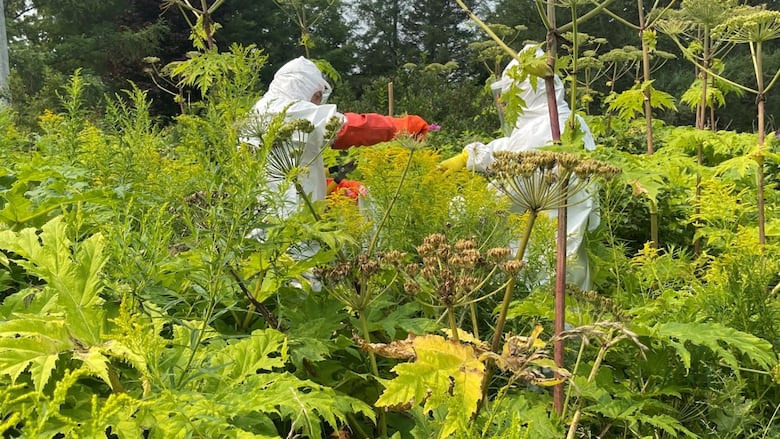Beware of invasive plants, even in P.E.I. garden centres, says council
‘Periwinkle, goutweed, lily of the valley, I’ve even seen Virginia creeper and creeping Charlie’

The P.E.I. Invasive Species Council is disappointed to see invasive plants showing up in Island garden centres this spring.
Coordinator Chase Guindon told CBC News plants he has seen a number of invasive plants for sale, but that is not too surprising.
"A lot of the invasive plants that we have established here in Canada were brought here for horticultural use in the first place, and that's still one of the main ways that we're seeing them spread around P.E.I.," said Guindon.
"Plants like periwinkle, goutweed, lily of the valley, I've even seen Virginia creeper and creeping Charlie for sale this year, which really breaks my heart to see. These are all plants that can have severe impacts on our Island ecosystems and biodiversity, and also just create a lot of work for you in your garden because they can easily take over."

Wildflower seed mixes can also be a problem, he said, because there is no way of knowing for certain what is in them.
Because the province is an Island it is difficult for invasive plants to get here on their own, Guindon said, and that has made control of some species easier.
Some plants that are fairly common on the other end of the Confederation Bridge occur in only isolated patches on the Island.
The council is asking gardeners to take care about what they are purchasing and planting both from garden centres and social media sites. A quick check on your phone can tell you if a plant is invasive or not.
Monocultures a red flag
The council is also looking for reports of invasive species that may be growing in the wild.

Even if you don't recognize the plant, Guindon said the way it is growing can be a clue that it is a problem.
"If you're seeing something where it's just one plant in a big area and there's no diversity there, that's kind of a red flag that it might be something invasive," he said.
When in doubt take some pictures and report it, said Guindon. He said he would rather receive 100 false reports than miss one real one.
You can email reports to the council, or look for the P.E.I. Invasive Species Council on social media.
With files from Island Morning